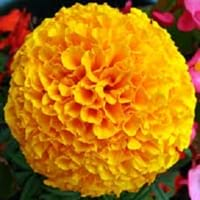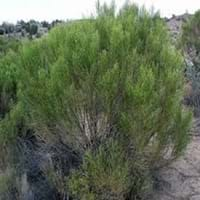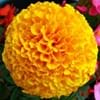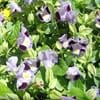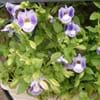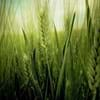Life Span
Annual
Perennial
Type
Flowering Plants
Shrub
Origin
Mexico, Central America
Hybrid origin, Southwestern United States
Types
Not Available
Not Available
Number of Varieties
Not Available
Habitat
Forest edges, gardens, Grassland, Homesteads, Rocky areas, Woods
riparian zones, Semi desert, Upland
USDA Hardiness Zone
9-11
8-10
AHS Heat Zone
12 - 1
12-1
Sunset Zone
A1, A2, A3, H1, H2, 1a, 1b, 2a, 2b, 3a, 3b, 4, 5, 6, 7, 8, 9, 10, 11, 12, 13, 14, 15, 16, 17, 18, 19, 20, 21, 22, 23, 24
7, 8, 9, 10, 11, 12, 13, 14
Habit
Upright/Erect
Spreading
Flower Color
White, Ivory
White
Flower Color Modifier
Bicolor
Not Available
Fruit Color
Not Available
creamy white
Leaf Color in Spring
Dark Green
Green
Leaf Color in Summer
Dark Green
Green
Leaf Color in Fall
Dark Green
Green
Leaf Color in Winter
Light Green
Green
Leaf Shape
Arrowhead
Oblanceolate , Ovate
Plant Season
Summer, Fall
Spring, Summer, Fall, Winter
Sunlight
Full Sun
Full Sun
Growth Rate
Very Fast
Slow
Type of Soil
Loam, Sand
Clay, Loam, Sand
The pH of Soil
Neutral, Alkaline
Acidic, Neutral, Alkaline
Soil Drainage
Well drained
Well drained
Bloom Time
Indeterminate
Spring
Tolerances
Drought
Drought, Dry soil, Heat Tolerance
Where to Plant?
Ground, Pot
Ground, Pot
How to Plant?
Stem Planting, Vegetative Reproduction
Seedlings
Plant Maintenance
Medium
Medium
Watering Requirements
Allow soil to be completely dry in between waterings, Requires regular watering, Water occasionally
Needs very little water
In Summer
Lots of watering
Lots of watering
In Spring
Moderate
Moderate
In Winter
Average Water
Average Water
Soil pH
Slightly Alkaline
Acidic, Neutral, Alkaline
Soil Type
Well drained
Clay, Loam, Sand
Soil Drainage Capacity
Well drained
Well drained
Sun Exposure
Bright Indirect Sunlight
Full Sun
Pruning
Prune regularly
Cut back old stems to the ground, Remove damaged leaves, Remove dead branches, Remove dead leaves
Fertilizers
All-Purpose Liquid Fertilizer
can go long without fertilizers
Pests and Diseases
Red blotch
Pests and diseases free
Plant Tolerance
Drought
Dry Conditions, Dry soil, Heat And Humidity
Flower Petal Number
Double
Single
Fragrant Bark/Stem
Yes
No
Foliage Texture
Medium
Fine
Foliage Sheen
Matte
Glossy
Attracts
Butterflies
Butterflies
Allergy
no allergic reactions
Unknown
Aesthetic Uses
Beautification
along a porch, deck or patio, Beautification, Ground Cover, Showy Purposes, Wild gardens
Beauty Benefits
Not Available
Not Available
Edible Uses
Yes
Sometimes
Environmental Uses
Air purification
Air purification
Medicinal Uses
Gastrointestinal disorders, Skin Disorders
anti-inflammatory, Anti-oxidant, cholesterol-lowering
Part of Plant Used
Whole plant
Twigs
Other Uses
Decoration Purposes, Not Available
Can be made into a herbal tea
Used As Indoor Plant
Yes
No
Used As Outdoor Plant
Yes
Yes
Garden Design
Foundation, Houseplant, Mixed Border, Rock Garden
Groundcover
Botanical Name
TAGETES erecta 'French Vanilla'
BACCHARIS 'Centennial'
Common Name
African Marigold
desert broom , broom baccharis , greasewood
In Hindi
अफ्रीकी गेंदा
desert broom
In German
Studentenblume
Wüste Besen
In French
Marigold africaine
desert broom
In Spanish
caléndula africana
escoba del desierto
In Greek
Αφρικής κατιφές
desert broom
In Portuguese
marigold africano
vassoura do deserto
In Polish
afrykański nagietka
desert broom
In Latin
African pingit vaccinia caltha
desert broom
Phylum
Not Available
Magnoliophyta
Class
Magnoliopsida
Magnoliopsida
Order
Asterales
Asterales
Family
Asteraceae
Asteraceae
Clade
Angiosperms, Asterids, Eudicots
Angiosperms, Asterids, Eudicots
Subfamily
Asteroideae
Not Available
Number of Species
Not Available
Importance of African Marigold and Desert Broom
Want to have the most appropriate plant for your garden? You might want to know the importance of African Marigold and Desert Broom. Basically, these two plants vary in many aspects. Compare African Marigold and Desert Broom as they differ in many characteristics such as their life, care, benefits, facts, etc. Every gardener must at least have the slightest clue about the plants he wants to plant in his garden. Compare their benefits, which differ in many ways like facts and uses. The medicinal use of African Marigold is Gastrointestinal disorders and Skin Disorders whereas of Desert Broom is anti-inflammatory, Anti-oxidant and cholesterol-lowering. African Marigold has beauty benefits as follows: Not Available while Desert Broom has beauty benefits as follows: Not Available.
Compare Facts of African Marigold vs Desert Broom
How to choose the best garden plant for your garden depending upon its facts? Here garden plant comparison will help you to solve this query. Compare the facts of African Marigold vs Desert Broom and know which one to choose. As garden plants have benefits and other uses, allergy is also a major drawback of plants for some people. Allergic reactions of African Marigold are no allergic reactions whereas of Desert Broom have Unknown respectively. Having a fruit bearing plant in your garden can be a plus point of your garden. African Marigold has no showy fruits and Desert Broom has no showy fruits. Also African Marigold is not flowering and Desert Broom is not flowering . You can compare African Marigold and Desert Broom facts and facts of other plants too.
